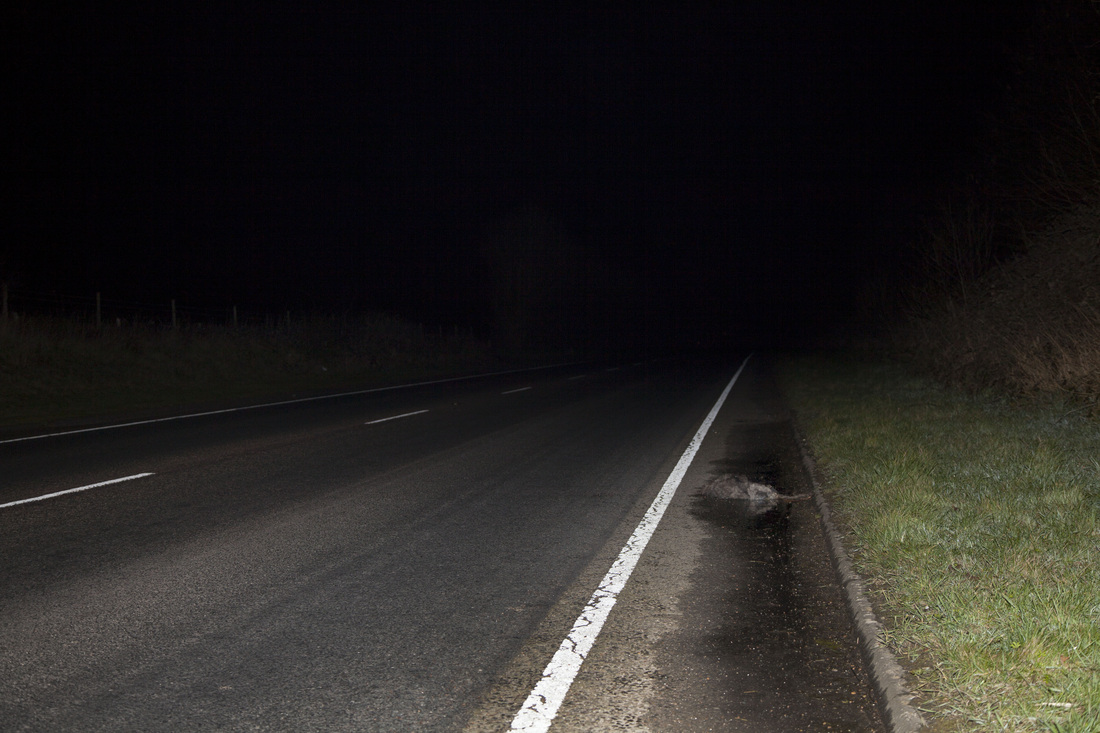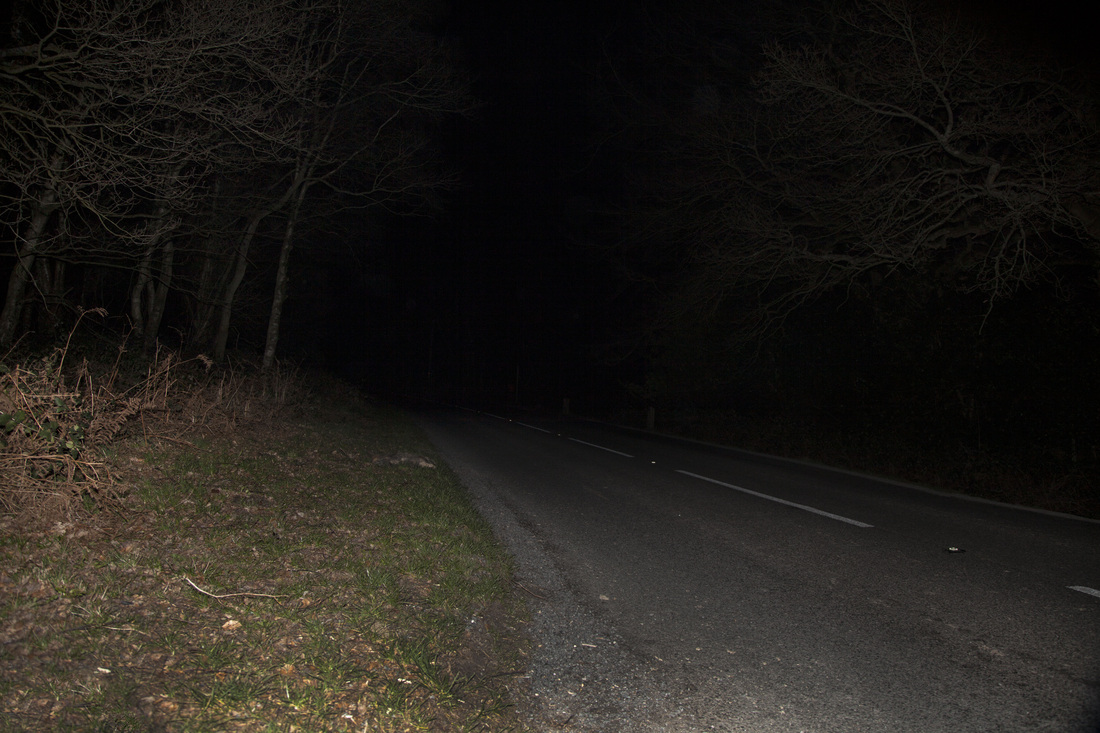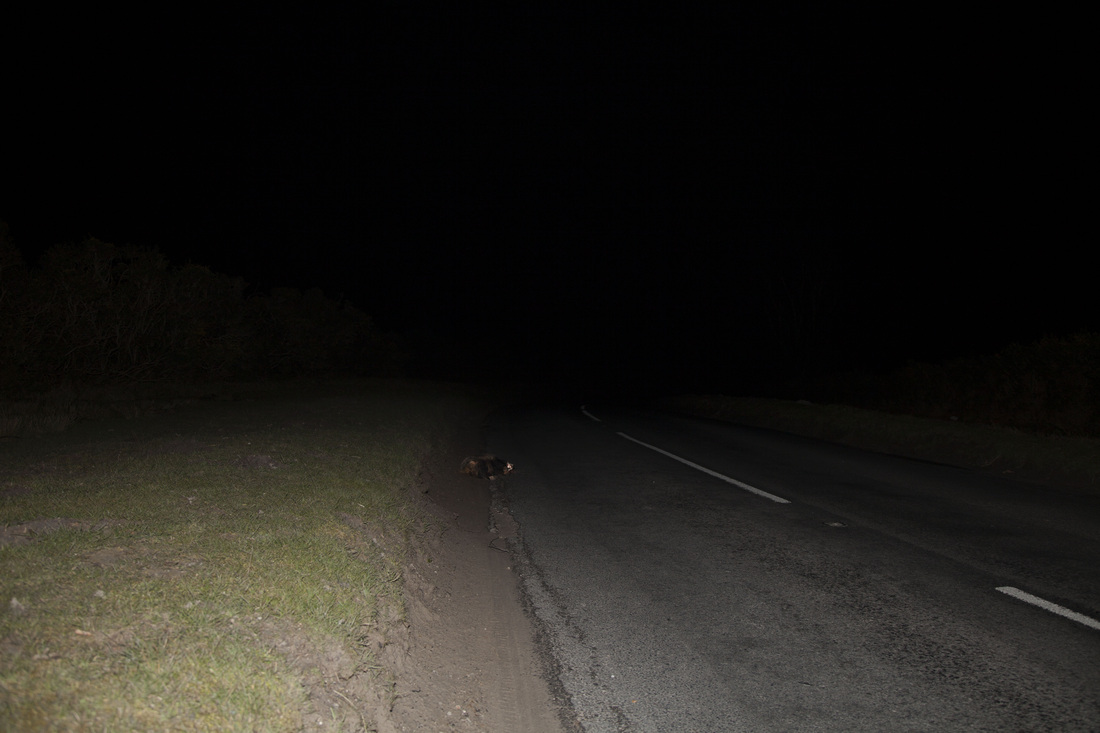so I have been writing poems each time we go out and find something it documents my feelings when i see the animal the state its in ect
text is very important to me and I need to figure out what I am trying to say with the photos.
I have taken them all in the same way with a flash at night
the photos become dark the further back you look if that makes sense i wanted it to be like fading to blackness like the body shutting down. the flash is all about being quick I'm hoping the death was instant and having tryed out a long exposure it created a different meaning. the flash just gave it a white light something you asoseate with dying seeing a white flash of light.
so the images are about the impact the car had on the animal i didn't want it to be close but you can see from the images the outline of what's left of the animal i think that's all you need I have looked twords crime scene photographers because they have to document what's in front of them as is. and that's persisly what i wanted to do show the animal in its last resting place as clearly as I could.
I'm not sure how to go about adding in the poems its all about how I felt when I saw the animal do I want people to have that knolage is it too personal are the poems good enough dose it change the meaning.
my other option is to have the date time location and condition of the animal when found although theses are just cold facts not very interesting
thinking about it poems could work its about the impacts cars have on animals the death adding a small poem to each image adds another layer of meaning almost giving the animal death an emotion i want people to see the animals death as a bad thing so many animals die on the roads each year adding emotion through words could make the images seem moor human like or is it giving people an emotion to work with when they are viewing the image.
text is very important to me and I need to figure out what I am trying to say with the photos.
I have taken them all in the same way with a flash at night
the photos become dark the further back you look if that makes sense i wanted it to be like fading to blackness like the body shutting down. the flash is all about being quick I'm hoping the death was instant and having tryed out a long exposure it created a different meaning. the flash just gave it a white light something you asoseate with dying seeing a white flash of light.
so the images are about the impact the car had on the animal i didn't want it to be close but you can see from the images the outline of what's left of the animal i think that's all you need I have looked twords crime scene photographers because they have to document what's in front of them as is. and that's persisly what i wanted to do show the animal in its last resting place as clearly as I could.
I'm not sure how to go about adding in the poems its all about how I felt when I saw the animal do I want people to have that knolage is it too personal are the poems good enough dose it change the meaning.
my other option is to have the date time location and condition of the animal when found although theses are just cold facts not very interesting
thinking about it poems could work its about the impacts cars have on animals the death adding a small poem to each image adds another layer of meaning almost giving the animal death an emotion i want people to see the animals death as a bad thing so many animals die on the roads each year adding emotion through words could make the images seem moor human like or is it giving people an emotion to work with when they are viewing the image.





 RSS Feed
RSS Feed
